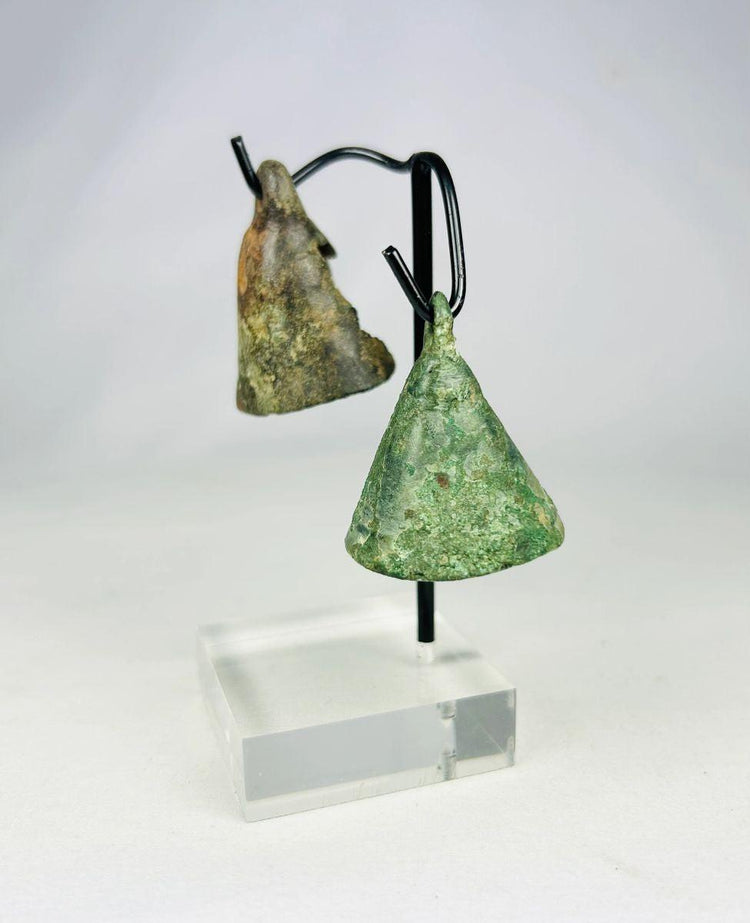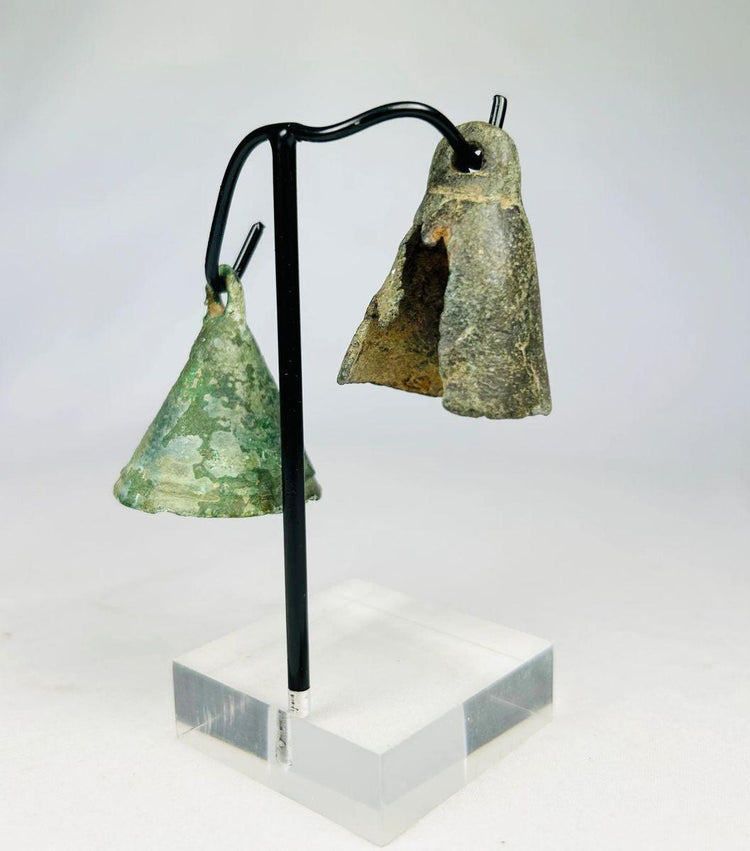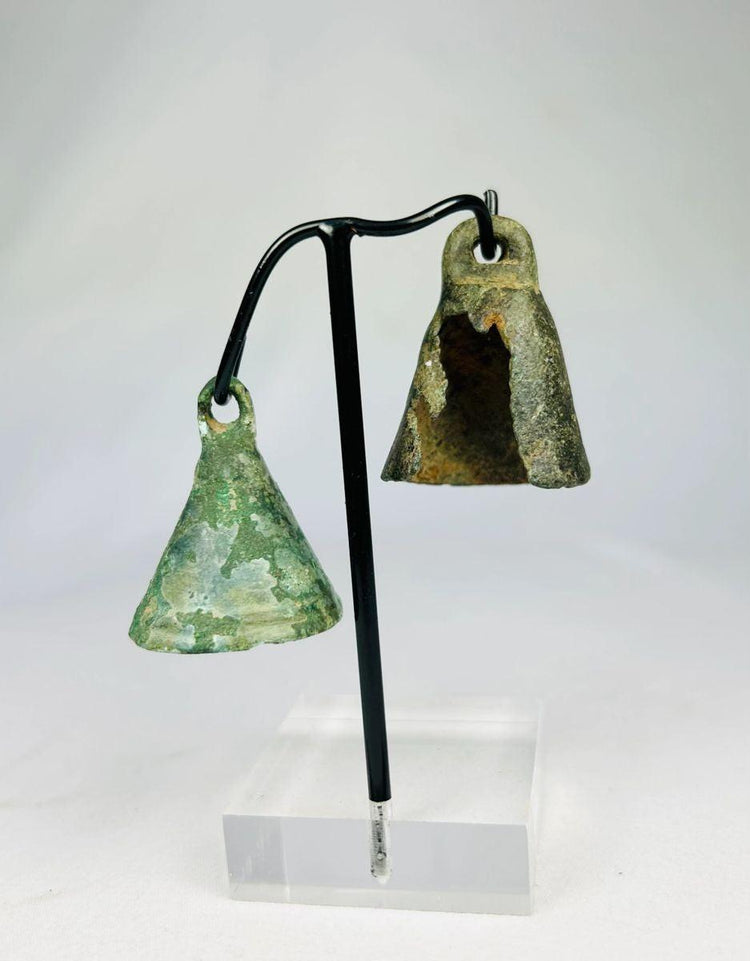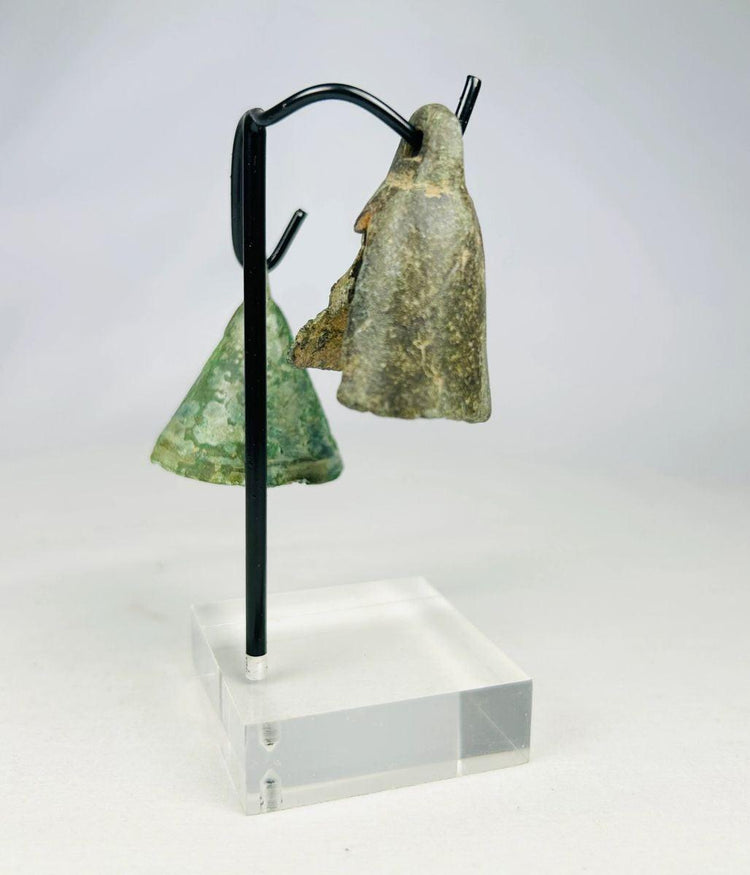Ancient Roman | Bronze Bells | Circa 1st - 4th Century CE
Description
More
Less
Historical Context & Origin
Region: Ancient Roman Empire
Material: Cast bronze with natural aged patina
Period: 1st–4th Century CE
Description
These finely cast bronze bells represent the multifunctional role of sound in Roman society, where bells were integral to both daily life and sacred rituals. Their conical bodies with suspension loops allowed them to be easily attached to doorways, harnesses, or ceremonial settings. In temples, bells signaled divine presence during rituals; in military camps, they marked curfews and signals; and in domestic spaces, they served as protective charms against malevolent spirits. The soft green and brown patina of these examples attests to centuries of burial, enhancing their authenticity and appeal.
Features
- Conical bell form with integrated suspension loops
- Solid cast bronze construction with rich natural patina
- Once contained small clappers for ritual and practical use
- Symbolic role as protective charms and ritual instruments
- Mounted on custom museum-quality display stand
Cultural Significance
In Roman culture, bells symbolized protection and order. Their presence in temples, homes, and military settings reflects their wide-ranging importance, from invoking divine blessings to safeguarding against evil. Harness bells also had practical use, alerting others to the movement of horses or chariots, while their protective symbolism reinforced the Roman belief in sound as a spiritual safeguard.
Condition
The bells display a well-preserved surface with natural green and brown patina developed over centuries. Minor corrosion and weathering are present but do not compromise structural integrity. The suspension loops remain intact, and both pieces are professionally mounted for display.
Dimensions (approximate)
Height: 1.5 in
Width: 1.5 in
Age
Over 1,600 years old
Description
Historical Context & Origin
Region: Ancient Roman Empire
Material: Cast bronze with natural aged patina
Period: 1st–4th Century CE
Description
These finely cast bronze bells represent the multifunctional role of sound in Roman society, where bells were integral to both daily life and sacred rituals. Their conical bodies with suspension loops allowed them to be easily attached to doorways, harnesses, or ceremonial settings. In temples, bells signaled divine presence during rituals; in military camps, they marked curfews and signals; and in domestic spaces, they served as protective charms against malevolent spirits. The soft green and brown patina of these examples attests to centuries of burial, enhancing their authenticity and appeal.
Features
- Conical bell form with integrated suspension loops
- Solid cast bronze construction with rich natural patina
- Once contained small clappers for ritual and practical use
- Symbolic role as protective charms and ritual instruments
- Mounted on custom museum-quality display stand
Cultural Significance
In Roman culture, bells symbolized protection and order. Their presence in temples, homes, and military settings reflects their wide-ranging importance, from invoking divine blessings to safeguarding against evil. Harness bells also had practical use, alerting others to the movement of horses or chariots, while their protective symbolism reinforced the Roman belief in sound as a spiritual safeguard.
Condition
The bells display a well-preserved surface with natural green and brown patina developed over centuries. Minor corrosion and weathering are present but do not compromise structural integrity. The suspension loops remain intact, and both pieces are professionally mounted for display.
Dimensions (approximate)
Height: 1.5 in
Width: 1.5 in
Age
Over 1,600 years old
You May Also Like





























